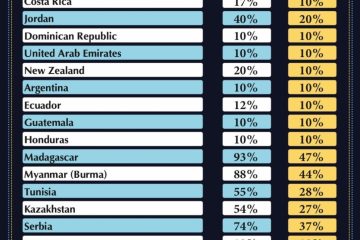Canada and China Tariffs: Understanding the Current Landscape

Introduction
The ongoing trade tensions between Canada and China have sparked concerns among businesses and consumers as tariffs are imposed on various goods. These tariffs, which are taxes levied on imports, have significant ramifications on trade balances, pricing, and economic relations between the two nations. In a global economy where interdependence is critical, understanding the implications of such tariffs is incumbent for those involved in business, trade, and policy-making in both countries.
Recent Developments
As of Fall 2023, Canada has implemented new tariffs on certain Chinese imports, amidst escalating political tensions surrounding issues such as human rights, cybersecurity, and intellectual property rights. The current tariff rates vary greatly by product, with some items facing duties exceeding 20%. Key sectors affected include technology, steel products, and even agricultural goods.
Moreover, China’s responsive measures have included their own tariffs on Canadian goods, further complicating the trade landscape. Canadian canola oil exports, for instance, have faced hurdles due to increased tariffs from the Chinese government as relations sour. Between 2021 and 2023, Canada’s export rates to China have shown a notable decline as a direct result of these trade barriers.
The Economic Impact
Experts warn that the rising tariffs could escalate into a more extensive trade war, which would be detrimental not only to Canada and China but could also affect global supply chains. Small businesses, which are primarily reliant on trade with China for manufacturing and raw materials, could see increased operational costs, leading to higher consumer prices. The Canadian economy, which is heavily reliant on international trade, particularly with an emerging market like China, might face further challenges as tariffs increase production costs.
In addition, Canadian consumers are likely to feel the pinch as retailers may pass on these higher costs to shoppers. The overall impact on inflation could hamper economic recovery post-COVID-19.
Conclusion
The evolving landscape of Canada-China tariffs represents a crucial juncture for both nations. As they navigate their diplomatic and economic ties, stakeholders in the business and policy arenas must monitor developments closely to adapt their strategies accordingly. Moving forward, the future of trade between Canada and China will largely depend on diplomatic negotiations and the willingness of both nations to reach an agreement that prioritizes mutual benefits. The implications of these tariffs extend beyond immediate economic concerns, shaping the long-term relationship between Canada and one of its major trading partners.








